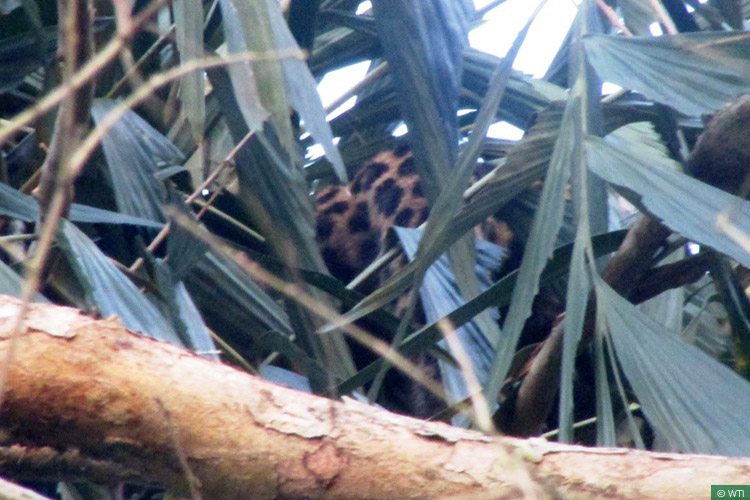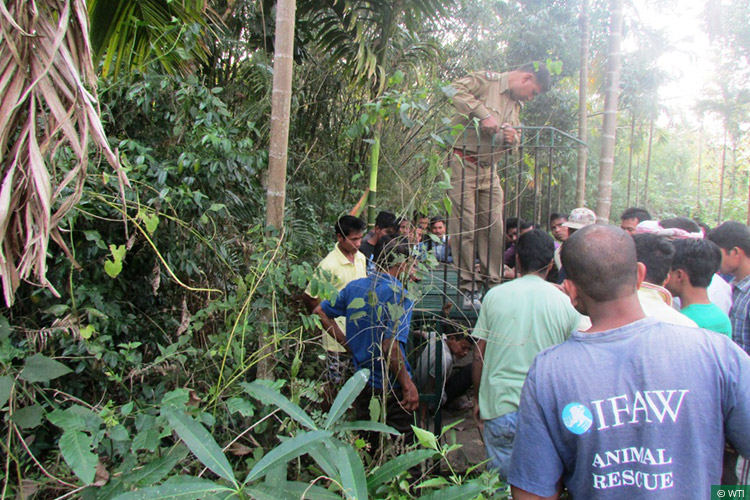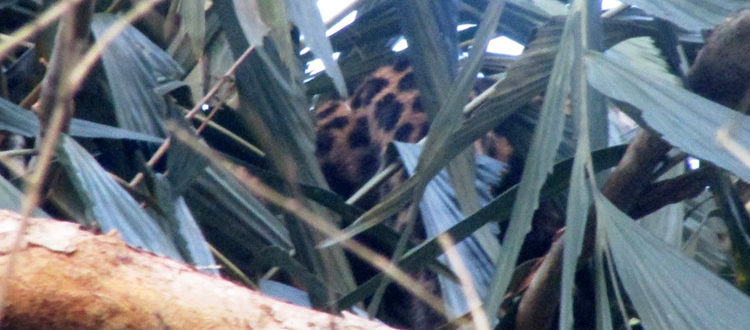MVS Team Helps Provide Conflict Leopard Safe Passage Back to the Wild in Jorhat

A glimpse of the leopard atop the palm tree it was hiding in at village Rajabor
Jorhat, Assam, March 5, 2017: Working in concert with the Assam Forest Department (AFD), a Wildlife Trust of India (WTI) Mobile Veterinary Service (MVS) team recently helped resolve a conflict situation by assisting a leopard that had strayed into a human settlement return safely to the wild.
The incident took place on February 26. Dr Daoharu Baro, a veterinarian with WTI and the Japan Tiger and Elephant Fund’s Wildlife Rescue Centre at Diphu, received an emergency call from the Divisional Forest Officer (DFO), Jorhat, that a leopard had been spotted hiding atop a tall palm tree at the village of Rajabor. Dr Baro was on a visit to the IFAW-WTI Centre for Wildlife Rehabilitation and Conservation (CWRC) near Kaziranga National Park at the time, and responded to the call accompanied by MVS personnel from the centre.
“It was a simple matter of letting the animal be, but crowd management – as it often is in such situations – proved to be the real challenge”
Having reached Rajabor just past noon, the MVS team, DFO, Assistant Conservator of Forests and Subdivision Police Officer first visited the gaon burha (village elder) to get the lay of the land. The leopard had apparently killed a two-month-old calf at the gaon burha’s home the previous day; a villager then spotted it atop the palm tree early on the morning of the 26th, whereupon the forest department was informed.
This was the first time that a leopard had strayed into this village and the villagers were understandably agitated. Local police and CRPF teams were called in to assist in crowd control while the MVS and AFD team, having placed a trap cage near the spot where the calf had been killed, convinced the villagers to let the leopard lie undisturbed till nightfall.
At around 7.15pm, the leopard was detected getting down from the tree and running away towards the nearby forest. “It was a simple matter of letting the animal be, but crowd management – as it often is in such situations – proved to be the real challenge”, said Dr Baro later. Reports received from the forest department the next day confirmed that the leopard had indeed left the area and the situation had returned to normal.

Forest department personnel setting up a trap cage at the village









